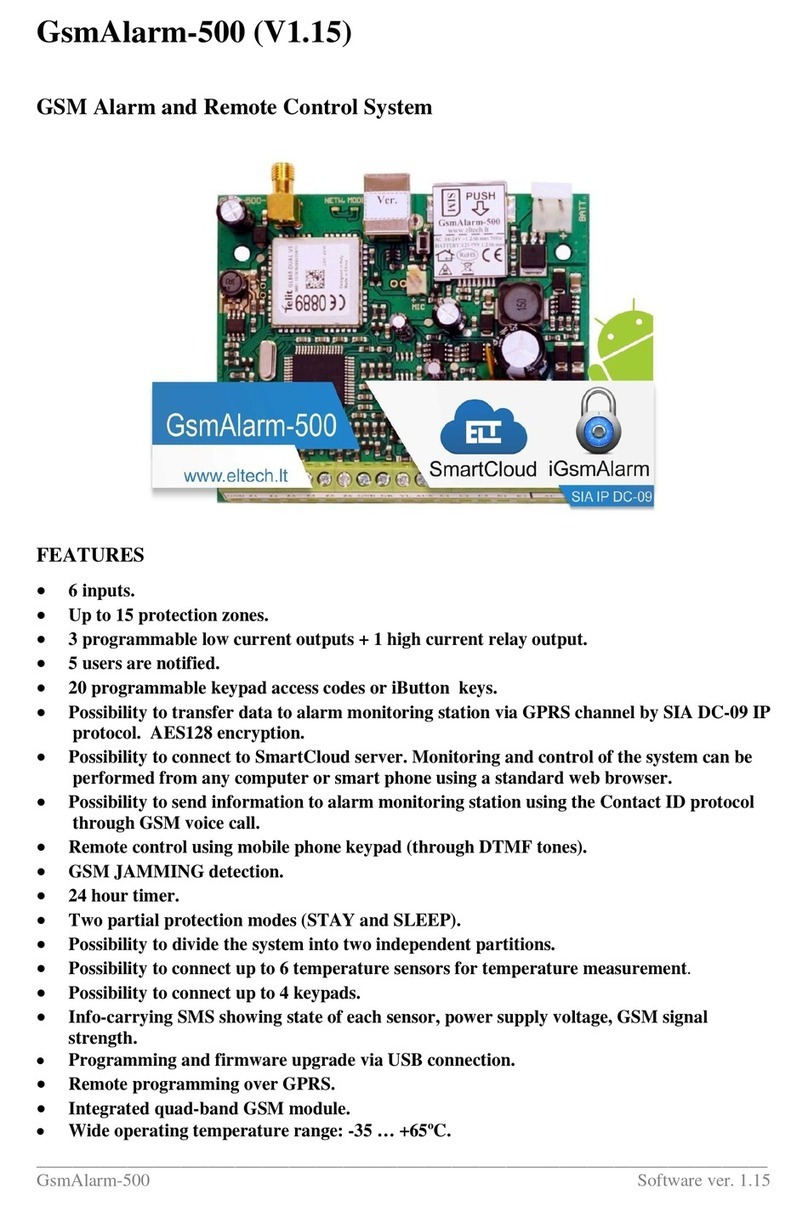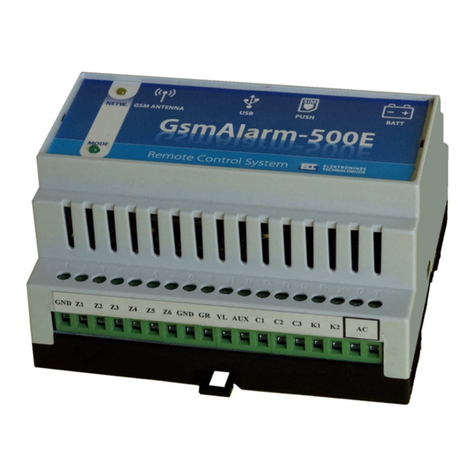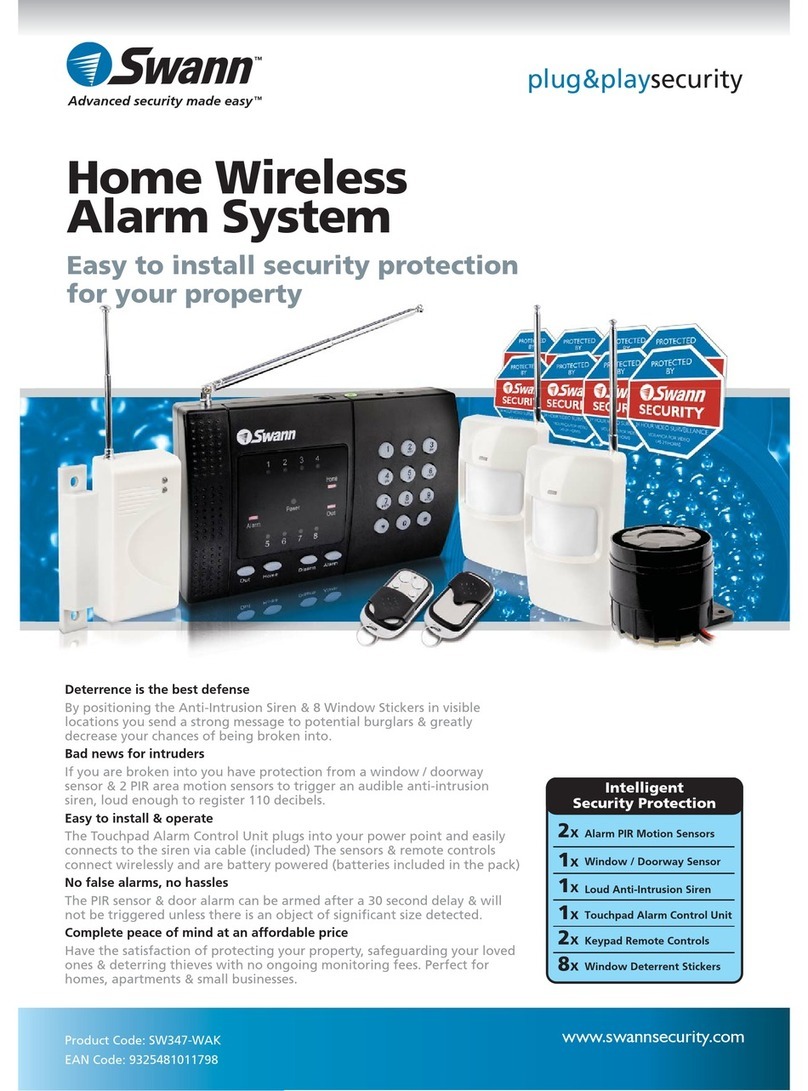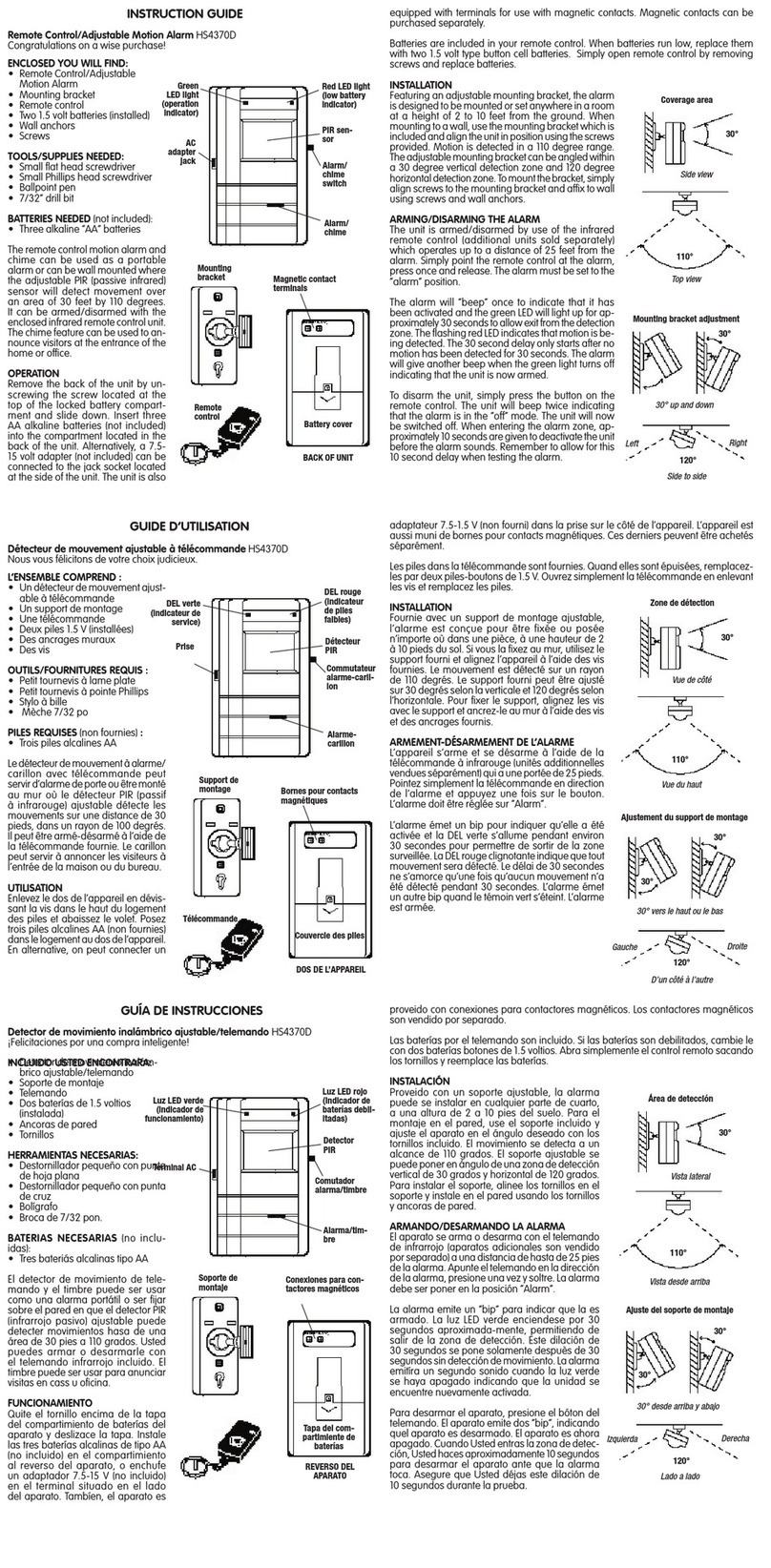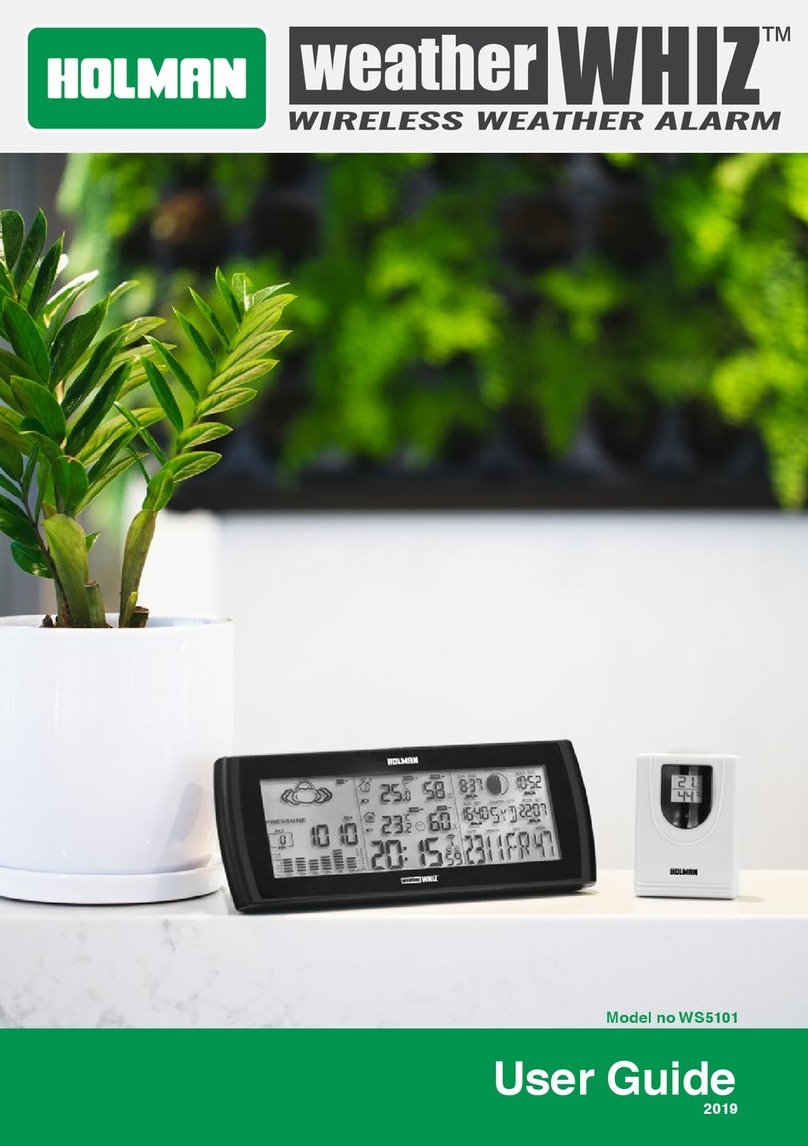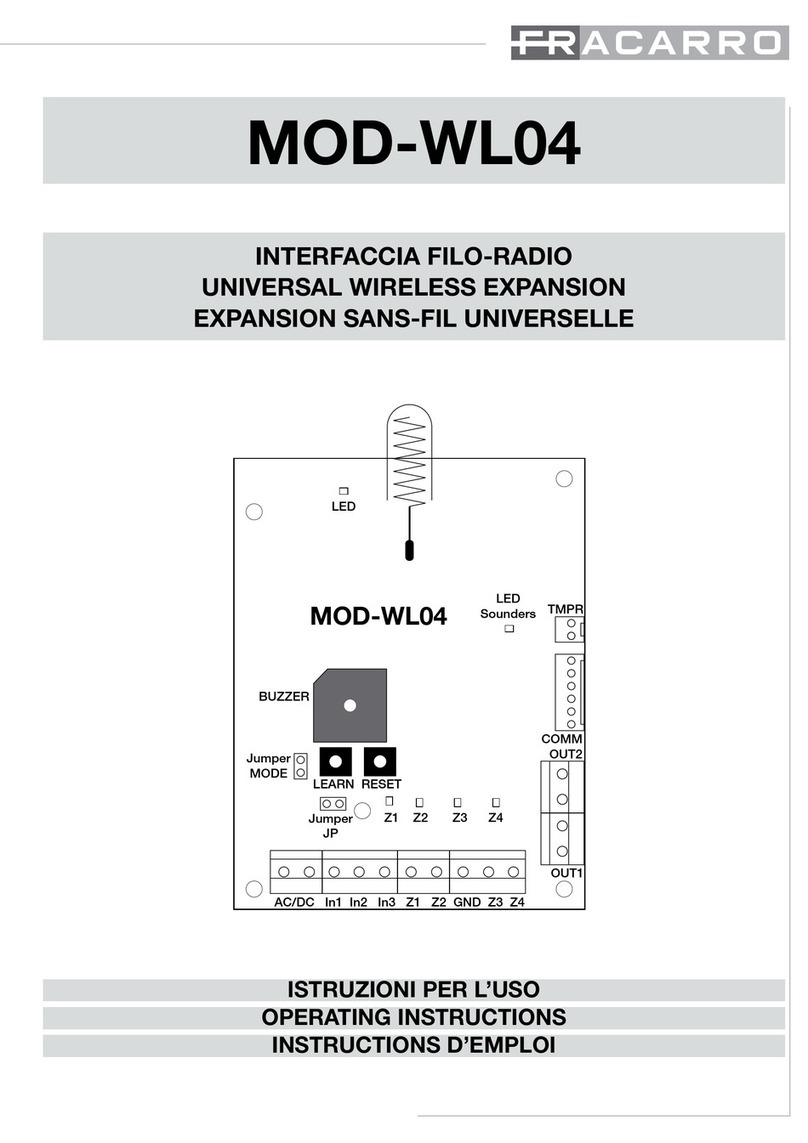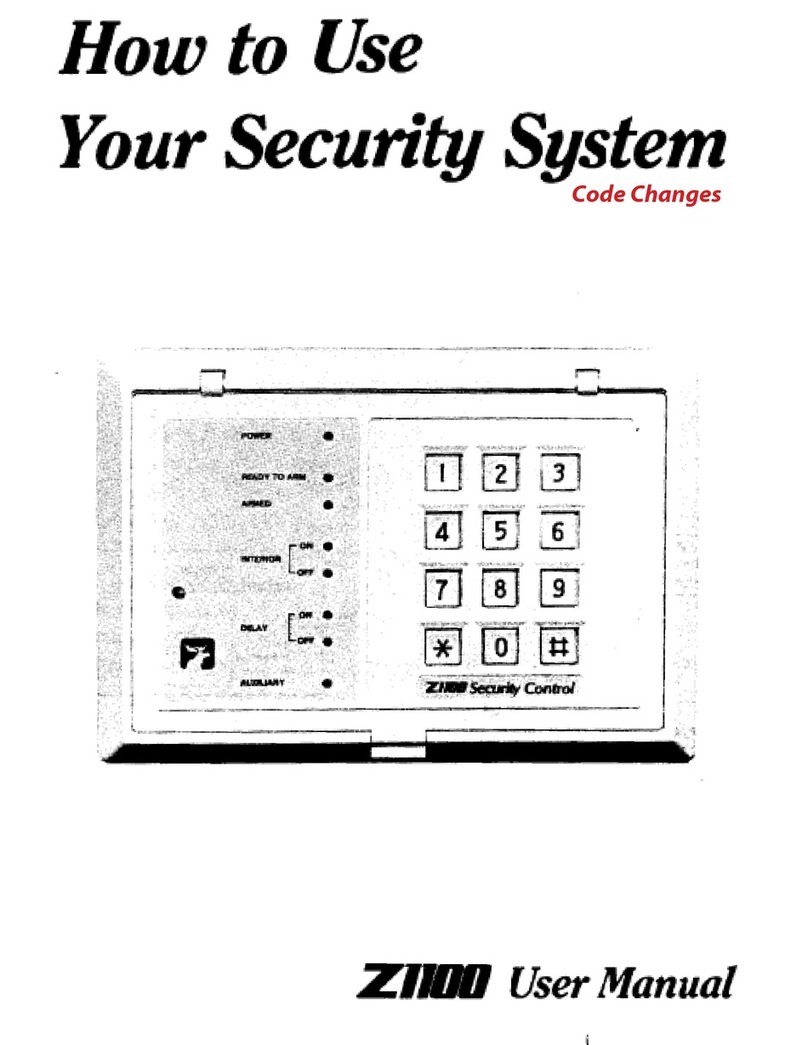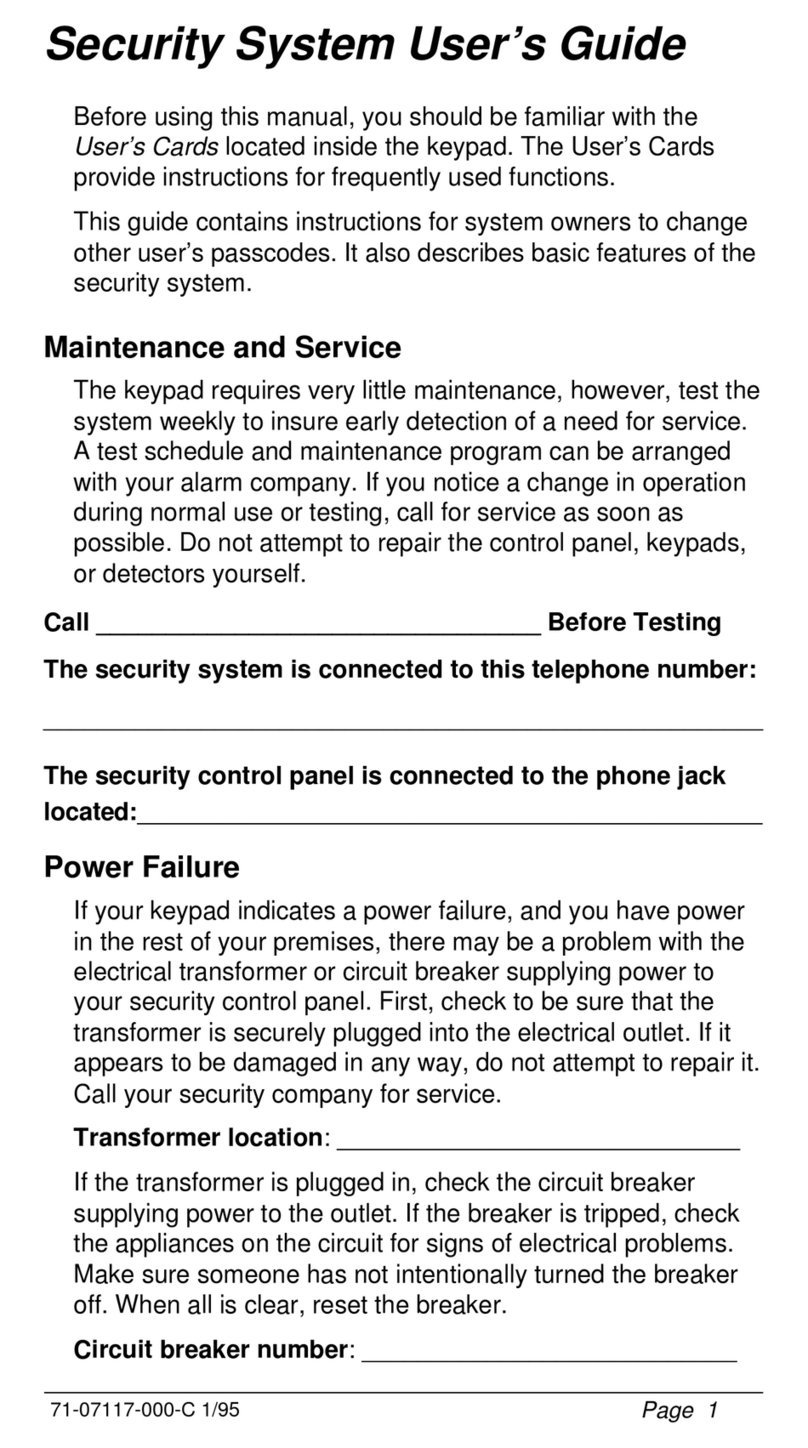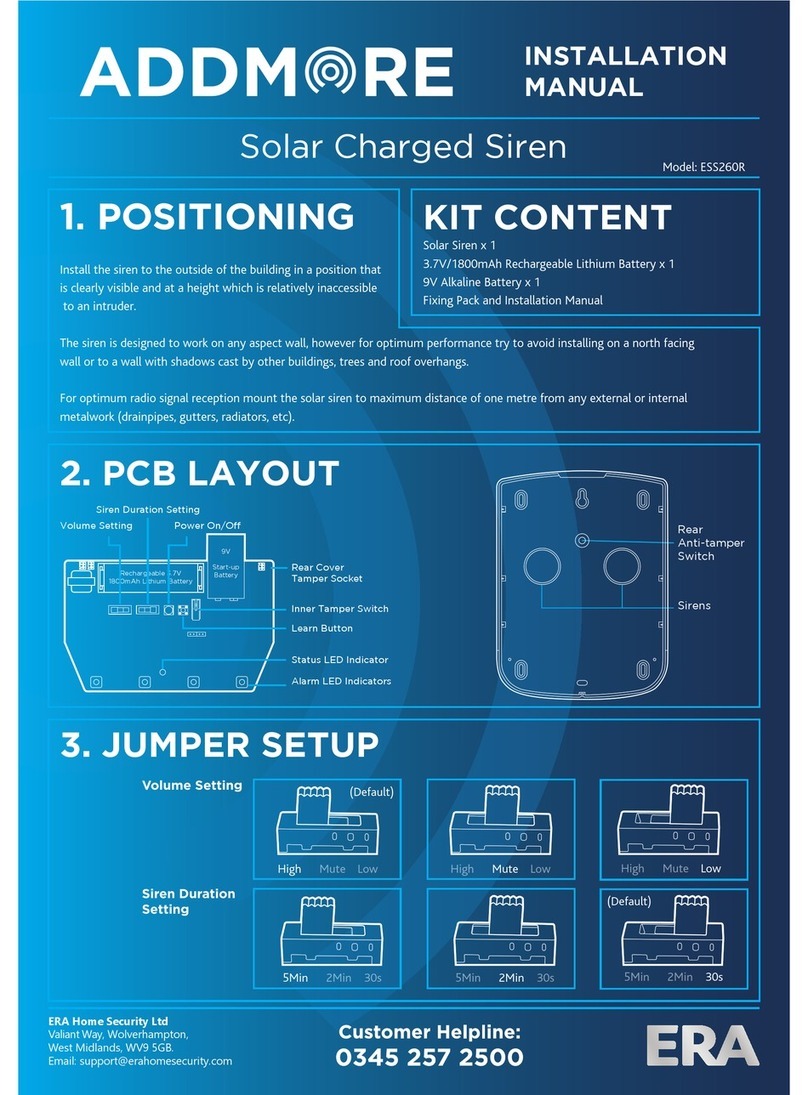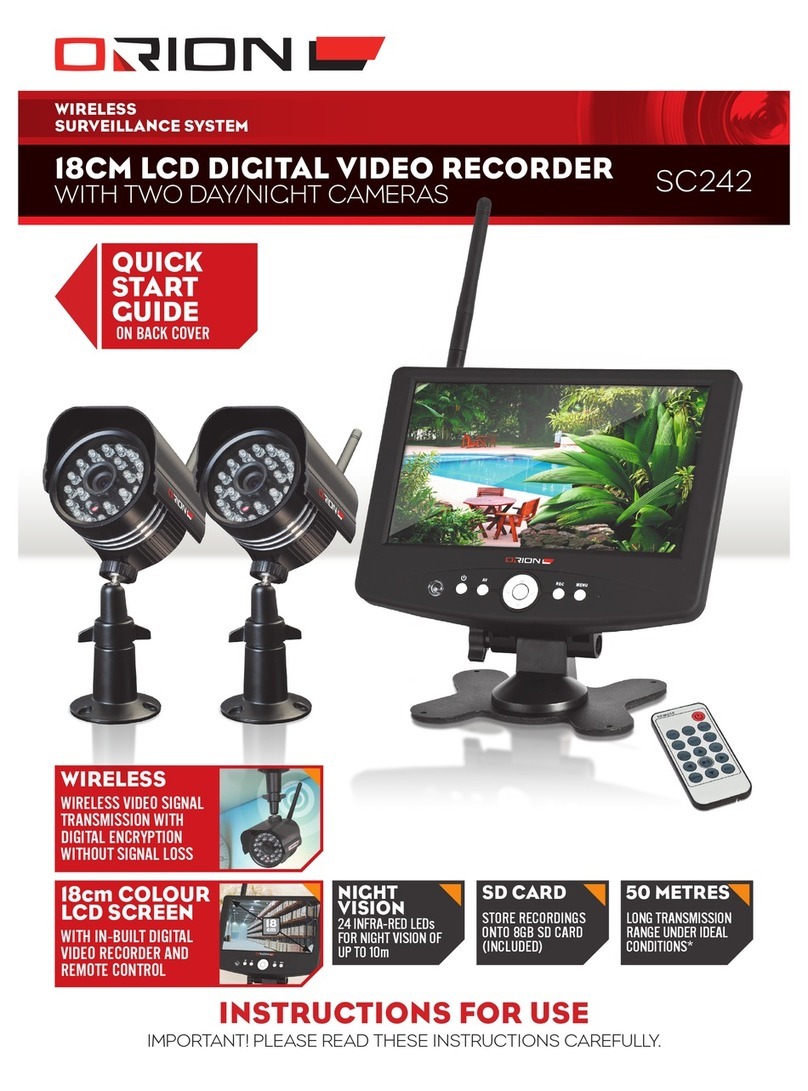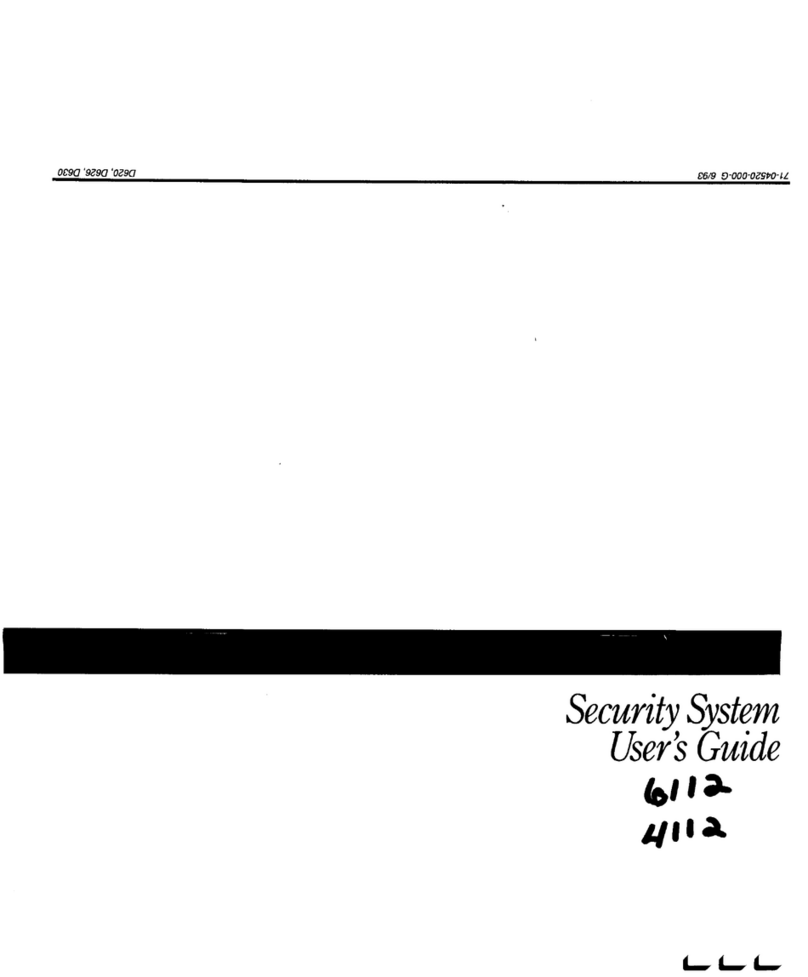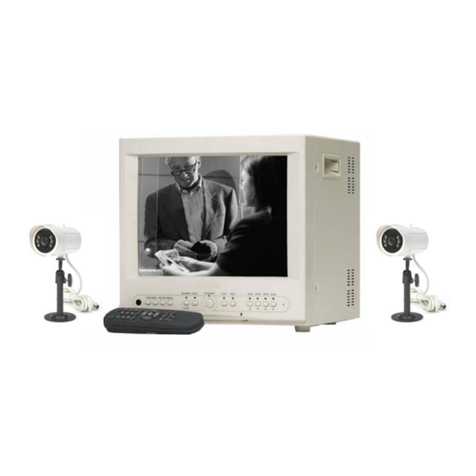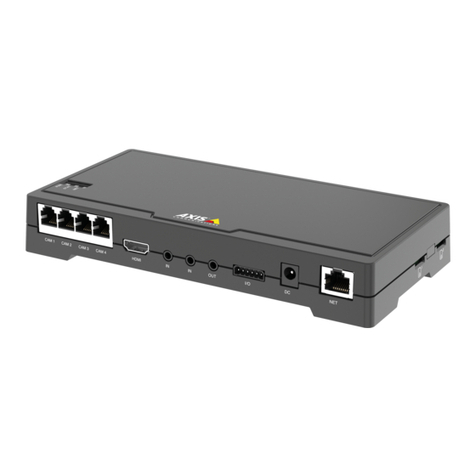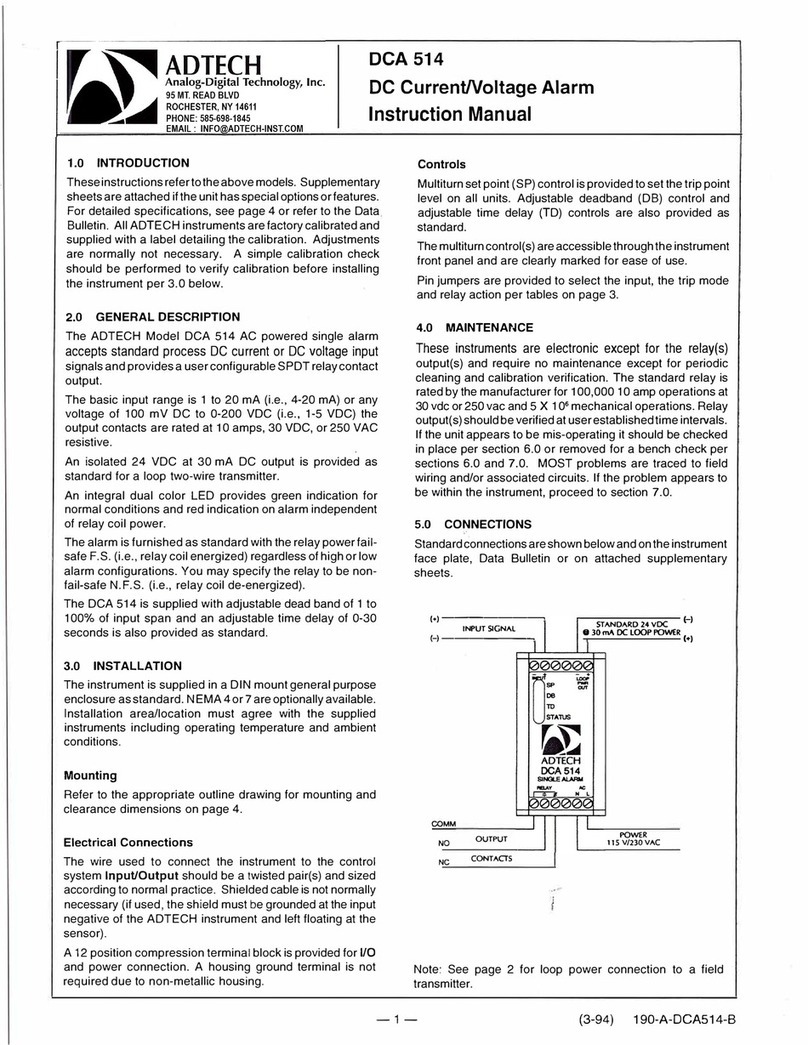eltech GsmAlarm-600 User manual

_________________________________________________________________________________
GsmAlarm-600 Software Ver. 1.07
GSM ALARM AND REMOTE CONTROL SYSTEM
GsmAlarm-600 (V1.07)
FEATURES
•The user is called upon triggering of the alarm and is informed by a voice message which
sensor has tripped and how many times.
•16 inputs. Up to 32 zones.
•Up to 64 zones, using wireless detectors.
•7 programmable low current outputs and one siren output.
•5 users are notified.
•20 programmable keypad access codes or iButton keys.
•Automated remote control using up to 250 numbers Caller ID recognition without call cost.
•Possibility to transfer data to alarm monitoring station by SIA DC-09 IP protocol (via GPRS
channel), data encryption by AES128, AES196 or AES256 algorithm.
•Possibility to transfer data to alarm monitoring station using the Contact ID protocol
through GSM (voice call).
•Possibility to connect to SmartCloud server. Monitoring and control of the system can be
performed from any computer or smart phone using a standard web browser.
•Remote control using a mobile phone keypad (through DTMF tones) and SMS.
•GSM JAMMING detection).
•24 hour timer.
•Two partial arming modes (STAY and SLEEP).
•Possibility to divide the system into two independent partitions.
•Option to connect an external microphone.
•16 temperature, humidity, 4-20 mA and other analogue sensors connection availability.
•Possibility to connect up to 16 temperature sensors for temperature measurement.
•Ability to enter zone/partition names and their temperatures by means of K32LCD keypad.
•Possibility to connect up to 4 keypads.
•Info-carrying SMS showing state of each sensor, power supply voltage, GSM signal strength.
•Remote diagnostic, programming and firmware upgrade over GPRS.
•Diagnostic, programming and firmware upgrade via USB connection.
•Integrated dual-band GSM module.
•Wide operating temperature range: -30 … +65ºC.
•Cheap maintenance

TABLE OF CONTENS
_________________________________________________________________________________
GsmAlarm-600 Software Ver. 1.07
TABLE OF CONTENTS
1. General Information ....................................................................................................................1
1.1. Safety Instructions ..................................................................................................................1
1.2. Package Content ......................................................................................................................2
1.3. Introduction ............................................................................................................................. 3
2. Connector functionality ...............................................................................................................4
2.1. Zone Input terminals Z1 – Z16 ................................................................................................4
2.2. Keypad Connection Terminals GR and YL ............................................................................. 4
2.3. Auxiliary Power Terminals AUX1 and AUX2 ........................................................................4
2.4. Programmable Output Terminals C1 – C7 ..............................................................................5
2.5. BELL/SIREN Connection Terminals BELL ...........................................................................5
2.6. AC Power Terminals................................................................................................................ 5
2.4. BATT Connector .................................................................................................................... 5
2.8. External Microphone Connector M+ and M- ..........................................................................5
2.9. Terminals LO and HI ..............................................................................................................5
2.10. Jumper CAN Load ................................................................................................................6
2.11. RESET Button .......................................................................................................................6
2.12. Memory card..........................................................................................................................6
2.13. Wireless Communication module .........................................................................................6
2.14. Ethernet module .................................................................................................................... 6
3. LED Indicators ............................................................................................................................. 7
3.1. NETWORK: Gsm Module State And Signal Strength Indicator ...........................................7
3.2. MODE: Alarm System Status Indicator .................................................................................. 7
3.3. WRLS: Wireless Indicator ......................................................................................................7
4. Installation .................................................................................................................................... 8
4.1. General Installation Instructions ............................................................................................. 8
4.2. Wiring Diagrams ................................................................................................................... 10
4.2.1. System with keypad access control ................................................................................10
4.2.2. System with iButton access control or ON/OFF switch ..................................................11
4.2.3. Outputs C1 - C7 wiring diagrams ................................................................................... 12
4.2.4. Ways to Connect Alarm Zones Z1 - Z16......................................................................... 14
4.3. Wired sensor connection.........................................................................................................15
4.3.1. Temperature Sensors.......................................................................................................15
4.3.2. Environmental humidity sensors ....................................................................................16
4.3.3. 4-20 mA sensors .............................................................................................................16
4.3.4. User configuration measurement mode...........................................................................17
5. Programming ............................................................................................................................. 18
5.1. General Programming Instructions ........................................................................................ 18
5.2. User and Alarm Monitoring Station numbers ........................................................................ 18
5.2.1. Programming with Standard Mobile Phone ...................................................................19
5.2.2. Programming with SMS ................................................................................................19
5.3. Programming System Parameters with SMS ......................................................................... 21
5.3.1. Programming Zones Z1-Z64...........................................................................................21
5.3.1.1. Parameter A - Input Triggering Conditions..............................................................23
5.3.1.2. Parameter M - System State after Input Triggering.................................................. 23
5.3.1.3. Parameter P- Dividing System into Two Partitions and Partial Arming Modes
STAY and SLEEP. Tamper Recognition ..........................................................................25
5.3.2. Programming of Outputs C1-C7, BELL (C8) parameters ............................................... 25
5.3.2.1. Outputs C1-C8 (BELL) operating modes ................................................................26

TABLE OF CONTENS
_________________________________________________________________________________
GsmAlarm-600 Software Ver. 1.07
5.3.2.2. Outputs C1-C8 (BELL) operation modes. Parameter V........................................... 28
5.3.3. Programming of Common System Parameters E, F, G, H, J, K, L, P, T......................... 28
5.3.3.1. Parameter E - the Way User Is Informed About Arming/Disarming......................... 29
5.3.3.2. Parameter F - System Response to Incoming Calls and Number
of Calls in Alarm State ............................................................................................ 30
5.3.3.3. Parameter G - SMS Delay Time in Case of Power Supply Failure .......................... 30
5.3.3.4. Parameter L - SMS Structure and SMS Password Functionality ............................. 30
5.3.3.5. Parameter P - Splitting of the system into 2 partitions. 24 hour sabotage detection. 31
5.3.4. Programming Partition Names .......................................................................................31
5.3.5. Setting System Clock .....................................................................................................31
5.3.6. Programming Weekly Timer ..........................................................................................32
5.3.6.1. Timer Instructions .....................................................................................................33
5.4. Programming the Description of Input Zone State (ALARM and OK).................................. 34
5.5. Programming User Names ....................................................................................................34
5.6. Programming SMS Password ................................................................................................ 34
5.7. Programming the System using the PARADOX Keypad ......................................................35
5.7.1. Programming the Access Codes .....................................................................................36
5.7.2. User Access Code Functionality .................................................................................... 37
5.7.3. Exit Delay Time .............................................................................................................37
5.7.4. Zones Z1-Z64 Entry Delay Time or Triggering Temperature (Parameter T) ..................38
5.7.5. Zones Z1-Z64 Input Triggering Conditions (Parameter A) ............................................ 39
5.7.6. Zones Z1-Z64 System State after Input Triggering (Parameter M) ................................40
5.7.7. Partial Arming Modes. Sabotage detection mode. (Parameter P) .................................. 41
5.7.8. Pulse counting Mode or temperature hysteresis (Parameter I) ........................................42
5.7.9. Zone Response Time ...................................................................................................... 43
5.7.10. Operating Time of Outputs C1-C7, BELL(C8) ............................................................44
5.7.11. Operating Mode of Outputs C1-C7, BELL(C8) ............................................................ 44
5.7.12. Outputs Inverted Mode and Operating Time Units........................................................44
5.7.13. Parameter E - The Way User Is Informed About Arming/Disarming............................ 45
5.7.14. Parameter F - System Response to Incoming Calls and Number
of Calls in Alarm State..................................................................................................45
5.7.15. Parameter G - Delay Time of Report SMS about the Power Supply Failure ................45
5.7.16. Parameter H - Data Transfer to the Alarm Monitoring Station...................................... 45
5.7.17. Parameter J - System Response to Intentional GSM Jamming .....................................46
5.7.18. Parameter L - SMS structure and SMS Password Functionality ...................................46
5.7.19. Parameter P - Partitioning ............................................................................................ 46
5.7.20. Access Code Length (4 or 6 Digits) .............................................................................46
5.7.21. Exit Delay Audible Indication ......................................................................................46
5.7.22. Assigning Keypad Zones ..............................................................................................47
5.7.23. Setting System Clock....................................................................................................47
5.7.24. Programming Weekly Timer.........................................................................................47
5.7.25. Programming CONTACT ID User Account Number ..................................................48
5.7.26. Temperature Correction ............................................................................................... 48
5.7.27. The Way User is Informed about STAY or SLEEP Mode Activation...........................49
5.7.28. The Way User is Informed about STAY or SLEEP Mode Deactivation....................... 49
5.7.29. Keypad Indicator StayD Key function......................................................................49
5.7.30. Load resistors inversion in ATZ mode.......................................................................... 49
5.8. Programming iButton Keys ................................................................................................... 50
5.9. Programming and Diagnostics Over the Internet ...................................................................50
6. Resetting system settings to factory defaults ............................................................................52
6.1. Manufacturer Programmed Parameters .................................................................................52
7. Data Transfer to Alarm Monitoring Station ............................................................................54

TABLE OF CONTENS
_________________________________________________________________________________
GsmAlarm-600 Software Ver. 1.07
7.1. GPRS Channel Settings ......................................................................................................... 54
7.2. Audio Channel Settings .........................................................................................................55
7.2.1. Programming CONTACT ID User Account Number ........................................................ 55
7.3. Modes of Data Transfer to the Alarm Monitoring Station .....................................................56
7.4. CONTACT ID Protocol Codes .............................................................................................57
8. Voice messages, preparation of MicroSD card.........................................................................58
9. System
Control Using the Keypad ............................................................................................59
9.1. Keypad Keys and LED Indicator Functionality .....................................................................59
9.1.1. Key - Extended indication mode ...............................................................................59
9.1.2. [TBL] Key - Trouble Display..........................................................................................59
9.1.3. [MEM] Key - Alarm Memory Display .......................................................................... 60
9.1.4. [BYP] Key - Bypass Programming ................................................................................. 60
9.1.5. [CLEAR] Key................................................................................................................. 60
9.1.6. [ENTER] Key.................................................................................................................60
9.1.7. ~Indicator.......................................................................................................................60
9.1.8. STAYD (STATUS) Indicator ............................................................................................ 60
9.1.9. OFF Indicator .................................................................................................................60
9.1.10. ARM, SLEEP and STAY Indicators................................................................................61
9.2. Regular Arming ....................................................................................................................61
9.3. Stay & Sleep arming ............................................................................................................. 61
9.4. Disarming & Deactivating an Alarm .....................................................................................62
9.5. Panic Alarms ......................................................................................................................... 62
9.6. Control of Separate Partitions ............................................................................................... 62
9.7. Programmable Outputs Control .............................................................................................62
10. System Control Using iButton Access Keys ...........................................................................62
11. Remote Arming & Disarming .................................................................................................63
12. System Operation in Alarm State ...........................................................................................64
13. Power Supply Monitoring .......................................................................................................64
14. GSM Jamming Detection ......................................................................................................... 65
15. System Control Using DTMF and SMS Commands ............................................................. 66
16. SmartCloud Server .................................................................................................................69
16.1. Settings and Activation .......................................................................................................69
17. Warranty ..................................................................................................................................70
18. Technical Characteristics ........................................................................................................71
19. Mounting Holes ........................................................................................................................73

GENERAL INFORMATION
_______________________________________________________________________________
GsmAlarm-600 -1- Prog. Ver. 1.07
1. GENERAL INFORMATION
1.1. SAFETY INSTRUCTIONS
Please read and follow these safety guidelines in order to maintain safety of operators and people
around. Retain all safety and operating instructions for future reference during the whole operating
lifetime of device
Device has two power supplies:
main and reserve
.
Main: power transformer: I: 230V ~ 120 mA max 50/60 Hz;
II: (16–24)V ~2 A max 50/60 Hz;
Reserve:
12 V 7Ah battery.
DC power supply which must be approved by LST EN 60950-1 standard and
be easily accessible
Any additional devices linked to the system GsmAlarm-600 (computer,
sensors, relays etc.) must be approved by LST EN 60950-1 standard
External power supply can be connected to AC mains only inside installation
room with automatic 2-pole circuit breaker capable of disconnecting circuit
in the event of short circuit or over-current.
Open circuit breaker must have a gap between connections of more than 3mm
and the disconnection current 5A
System GsmAlarm-600 is a device mounted in limited access areas. Any system
repairs must be done only by qualified, safety aware personnel. There are no
parts you can change at place in the device
The system must be used only with approved back-up battery to avoid fire or
explosion hazards. Special care must be taken connecting positive and
negative battery terminals. Switching the pole terminals places is NOT
allowed
Mains power must be disconnected before any installation or tuning work
starts. The system installation or maintenance must not be done during
stormy conditions
F1 type fuse
-
Slow blown 5A. The blown fuse should not be replaced with a fuse of
a different type than instructed by the manufacturer

GENERAL INFORMATION
_______________________________________________________________________________
GsmAlarm-600 -2- Prog. Ver. 1.07
ATTENTION !
EXPLOSION HAZARD IF AN UNSUITABLE BATTERY IS USED THAT IS
NOT APPROVED BY THE MANUFACTURER.
DO NOT INSTALL THE BATTERY WITH REVERSED POLARITY
.
DO NOT SHORT
-
CIRCUIT BATTERY POLES
.
After the battery expires, it should be removed according to the effective
regulations (EU Directives 91/157/EEC and 93/86/EEC)
CAUTION TO THE MAINTENACE PERSONNEL !
TWO POLES OF AC MAINS.
THE FUSE OF THE POWER TRANSFORMER IS ON THE NEUTRAL
CONDUCTOR !
If you use I security class computer for setting the parameters it must be
connected to earth
Remote control and monitoring device GsmAlarm-600 has built-in radio transmitter operating on
GSM900 and GSM1800 networks. Do not use the device where it can cause interferences and danger.
Do not arrange the device close to medical equipment and appliances. Do not use the device in
explosive environment. Device is not resistant to moisture, chemical materials or mechanical damage.
Don’t attempt to personally repair the system. System label is on the top side of the device.
This symbol on the product or on its packaging means that your electrical and electronic
equipment should be disposed at the end of life separately from your household wastes.
There are separate collection systems for recycling in EU. For more information, please
contact the local authority or the dealer where you purchased the product.
The device compliance to RoHS Directive.
1.2. PACKAGE CONTENT
Main board GsmAlarm-600 ...................................................................Qnty 1
GSM antenna with magnetic fix and 2 m lead cable ..............................Qnty 1
Microphone.............................................................................................Qnty 1
Microphone connector ..........................................................................Qnty 1
Load resistors 1,0 kΩ±5% ....................................................................Qnty 32
Load resistors 2,2 kΩ±5% ....................................................................Qnty 16
Battery connection wire .........................................................................Qnty 1
Fastening clips .......................................................................................Qnty 4
User‘s manual ........................................................................................Qnty 1

GENERAL INFORMATION
_______________________________________________________________________________
GsmAlarm-600 -3- Prog. Ver. 1.07
1.3. SHORT DESCRIPTION OF OPERATION
GsmAlarm-600 can be used for protection of houses, apartments, cottages and other buildings. In the
case of trespass of the protected zone GsmAlarm-600, depending on the programmed system operating
algorithm, can switch the siren on, call the user and inform by a voice message which sensor was
tripped, how many times, and the present temperature. Device can send SMS messages to five users and
transfer information to the alarm monitoring station by Contact ID protocol through GSM network.
Data can be transferred directly to alarm monitoring station by Contact ID protocol (audio channel), or
can be converted to a standardized, many security service stations understandable, SIA DC-09 IP format
and transmitted via Internet (GPRS channel). It is possible to transfer data in both methods: first try to
send data via GPRS channel, if fails, use Contact ID protocol (audio channel).
User answers the call, can listen, what is going on in the unit and control the system using his mobile
phone keypad (through DTMF tones).
GsmAlarm-600 has 7 (8, if siren is not used) programmable outputs, intended for remote control of
different devices. User can turn on/off heating, ventilation or lighting systems etc, by using his mobile
phone just by typing a 2-digit code or sending SMS to the control device.
Device works perfect for remote control of automated gates, fences and electromagnetic door locks.In
order to open the gate, user calls GsmAlarm-600 number. Then GsmAlarm-600 checks the caller’s
number in the list of programmed user numbers and in the case of positive find, switches on the gate
control device and cancels the call automatically. 250 users are able to control the gate. User numbers
can be grouped into eight groups, where each group controls a single output out of eight outputs.
Up to 4 Paradox K636, K10V/H (MG10LEDV/H), K32 (MG32LED), K32LCD (MG32LCD), TM50
keypads can be connected to GsmAlarm-600. By using the keypad users can arm or disarm the system
and configure system parameters. Following keypad LED indicators you can determine protected unit
state, system mode etc.
The system is controlled by iButton (also known as DALLAS) keys.Several control functions can be
assigned to each key. Example: a user can arm the system and a controllable output by touching the
contact with the key. A user name can be assigned to each key (as well as to a keypad code) that will be
indicated in SMS messages. Up to 20 iButton keys can be programmed.
If keypad or iButton keys are not used, the system may be armed and disarmed by a simple switch or a
short free call. The alarm system is controlled exclusively from the user telephone. If the system
receives a call, coming not from the user's phone, the call is immediately interrupted and the user is sent
an SMS message, specifying the caller's phone number. The user is also informed by an SMS message
about loss and restoration of AC mains power supply.
The system has temperature measurement possibility. Up to 16 temperature sensors can be connected to
GsmAlarm-600 device. If temperature exceeds or subsides programmed range, system sends SMS to
user(s), relevant programmable output can be activated/ deactivated.
24 hour timer enables activation/deactivation of programmable output, arming or disarming, receiving
SMS messages with protected object state information on a desired time.
The system has capability to detect intentional jamming of GSM. The siren is activated upon detection
of the jamming signal, and the user is informed thereof by an SMS message about it after clearing of
GSM jamming signal. The message indicates the jamming onset time.
GsmAlarm-600 parameters may be set via a computer using the GSM alarm configuration tool GAprog.
The module is accessible via an USB port or over the internet through GPRS channel. If a computer is
unavailable, the system is set up by a keypad or SMS messages.

LED INDICATORS
_______________________________________________________________________________
GsmAlarm-600 -4- Prog. Ver. 1.07
2. CONNECTOR AND LED FUNCTIONALITY
GsmAlarm-600 Connection terminals and LED indicators
2.1. ZONE INPUT TERMINALS Z1 - Z16
Inputs Z1-Z16 are used to connect alarm detectors or
temperature sensors KTY81-110 (PHILIPS).
T e inputs can operate in EOL or ATZ mode (see. C .
5.3.1.1), in t is case 1 kΩ and 2,2 kΩ load resistors are
required.
Equivalent diagram of zone input
2.2. KEYPAD CONNECTION TERMINALS GR and YL
Use GR, YL, GND and AUX terminals to connect PARADOX K636, K10V/H (MG10LEDV/H), K32
(MG32LED) or K32LCD (MG32LCD) keypad. These terminals can also be used for connection of the
iButton key reader or ON/OFF switch.
2.3. AUXILIARY POWER TERMINAL AUX1 and AUX2
The auxiliary power supply can be used to power motion detectors and other devices. Both terminals
AUX1 and AUX2 are short-circuit-protected. Max load current: 800 mA max. Total load current from
both outputs should not exceed 1.6 A max.
NETW.
RESET
Z8
MODE
MICROPHONE
CONNECTOR
M-
M+
GSM ANTENNA
CONNECTOR (SMA)
+
SYSTEM
STATUS LED
INDICATORS
Z7Z6 COMZ5COMZ4Z3COMZ2Z1C7C6C5C4C3C2C1AU 1
BATT
USB
Z9Z10
COM
Z11Z12COMZ13Z14COMZ15Z16GRYLGNDAU 2LO HI
SIM CARD
WRLS
GND
Micro SD
MEMORY
CARD
CAN LOAD
ETHERNET
MODULE
WIRELESS
COMMUNICATION
MODULE
BELLGND
~ AC ~
GSM MODULE
MEMORY
CARD SLOT
RESERVE
BATTERY
CONNECTOR

LED INDICATORS
_______________________________________________________________________________
GsmAlarm-600 -5- Prog. Ver. 1.07
Important! In order to avoid overloading power supply outputs AUX1 and AUX2 take into consideration
the total current consumption by all devices (relays, switches, keypads, etc.) connected to the
corresponding output.
2.4. Outputs C1 - C7
Programmable (PGM) outputs C1- C7 are used for remote control or connection of
timer-controlled devices. Relays with 12V operating voltage and current not
exceeding 70 mA max, are recommended for device control.
Output operating modes are described in Ch 5.3.2.1.
Equivalent diagram of C1-C7 outputs
2.5. BELL/SIREN CONNECTION TERMINALS BELL
These terminals are relay contacts of the programmable output are used to connect
audio siren or extra-commutated device.
Commutated current may reach: 0.6 A max.
Equivalent diagram of BELL output
2.6. AC POWER TERMINALS
Use a 16-24 VAC transformer with a minimum 40 VA rating to supply AC power to the
GsmAlarm-600.
2.7. BATT CONNECTOR
Use this connector to connect the backup battery. Max capacity of the backup battery is 7 Ah. Voltage:
12 VDC.
2.8. EXTERNAL MICROPHONE CONNECTOR M+ M-
This connector is used to connect an external microphone. Connect white wire to contact M+, black – to
M-. If wire of the microphone is long (over 2 m), it is recommended to use shielded twisted pair cable.
Connect shield to GND contact. In order to avoid interference install microphone as far as possible from
GSM antenna. The microphone is activated automatically when voice messaging function is not in use (a
MicroSD card is absent). When voice messaging function is activated, the microphone is activated by
DTMF command 19* (see Ch. 15).
2.9. CONTACTS LO and HI
The contacts are dedicated for connection of auxiliary devices via CAN (Controller Area Network)
interface.
LO: CANL signal, HI: CANH signal. CAN interface is not used in this version.
GND
BELL

LED INDICATORS
_______________________________________________________________________________
GsmAlarm-600 -6- Prog. Ver. 1.07
2.10. JUMPER CAN LOAD
When the jumper is installed, the CAN line is loaded with a 120 Ωresistor. The load should be plugged
in as line terminators only for two devices connected via CAN interface. CAN interface is not used in this
version.
2.11. RESET BUTTON
RESET button is used to restore factory default settings (see. Ch. 6).
2.12. MEMORY CARD
Micro SD memory card. The card is required for voice messaging function (see Ch. 8). SD card is not
included with GsmAlarm-600.
2.13. WIRELESS COMMUNICATION MODULE
The wireless communication module WLM-600-433 designed to receive data from wireless alarm,
temperature and humidity sensors. The module works with these sensors:
Wireless door/window contact WS4945, WS4975 (DSC)
Wireless passive infrared detector WS4904 (DSC)
Wireless smoke detector with heat detection WS4916EU (DSC)
Wireless temperature and humidity sensor THGN132N (Oregon Scientific)
Max protection detectors quantity: 64.
Max temperature and humidity sensors quantity: 3.
The modules are no included with GsmAlarm-600 and are acquired separately. For more information
about the module WLM-600-433 installation and configuration you will find in the module user's
manual.
2.14. ETHERNET MODULE
Ethernet module is designed for connection of the device to the Ethernet. The modules are to be used in
the upcoming versions of the device.

LED INDICATORS
_______________________________________________________________________________
GsmAlarm-600 -7- Prog. Ver. 1.07
3. LED INDICATORS
3.1. NETWORK: GSM MODULE STATE AND SIGNAL STRENGTH INDICATOR
Indicator state Explanation
Out. GSM module is not in use. No power supply or system failure.
Continuously On. There is no GSM operator network registration. Possible
causes: SIM card PIN code request is not deactivated, antenna
not connected or poor network connection quality.
Blinking more frequently than once
a second. GSM module is in use: outgoing call or SMS is being sent
Blinks 5 times, short break afte
r.
Very good signal
.
Blinks 4 times, short break after. Good signal.
Blinks 3 times, short break after.
Satisfactory connection.
.
Blinks 2 times, short break after. Weak connection.
Blinks once, short break after. Poor connection.
3.2. MODE: ALARM SYSTEM STATUS INDICATOR
Indicator state
Explanation
Out. No power supply or system failure.
Continuously On. System is operative, disarmed, no zone sensors have been
triggered.
On with short breaks. System is operative, disarmed, but one or more zone sensors
have been triggered.
Blinking with low frequency (once
in 2-3 sec.). System is armed.
Blinking more frequently than once
a second. System is in alarm state
Blinking very rapidly for 2-3 sec. SMS instruction or DTMF command receipt confirmation.
3.3. WRLS: WIRELESS INDICATOR
Indicator state Explanation
Blinks periodically. Data are received from wireless sensors.

INSTALLATION
_______________________________________________________________________________
GsmAlarm-600 -8- Prog. Ver. 1.07
4. INSTALLATION
4.1. GENERAL INSTALLATION INSTRUCTIONS
System should be assembled in metal housing 7/TRP40 as recommended

INSTALLATION
_______________________________________________________________________________
GsmAlarm-600 -9- Prog. Ver. 1.07
According to manufacturer recommendations, hire qualified security system specialist (or company)
to perform system installation works. Self-dependent installation of the system can be performed
only if person possess basic knowledge in electricity and electronics,otherwise device might be
irrecoverably damaged.
System should be assembled in metal housing 7TRP40/DSPR as recommended. Housing should be
mounted inside the premises, at hard visible place.
Use double isolated cable 3x0,75 mm
2
for 230V power supply. Circuit breaker or other surge
protection device should be installed in the 230V power line.
For over-current protection, a two-pole protection device, capable to disconnect the maximal possible
failure current (VF230-AC) should be installed into the power supply at the short-circuit room. The
dividing gap between the disconnection terminals should be at least 3mm.
Ground terminal of the GsmAlarm-600 central unit is connected to the functional ground terminal of
the metal box.
Antenna is fixed on the top of outer side of metal housing.
It is recommended to use standard motion (e.g., SRP-300) and fire (e.g., E318-4) sensors in alarm
system. Use standard 6-8 wired single core cable designed for installation of security systems. Siren
DC12V 500mA (e.g., MR-100) is recommended for sound alarm use double isolated cable 2x0,75
mm
2
to connect it to the system. Backup battery must be PB-acid (e.g., CT7-12).
It is recommended to install remote control relays into sockets (e.g., F95913) which can be easily
fixed to metal housing. Operating current of relay coil cannot exceed 70mA max. (e.g., F4031-12).
Relays are selected depending on desirable commutative voltage and current.
Connection according to the wiring diagram presented in Chapter 4.2.1 is recommended, if the
system is controlled by a keypad. Up to 4 Paradox K636, K10V/H (MG10LEDV/H), K32
(MG32LED), K32LCD (MG32LCD) or TM50 keypads can be connected to GsmAlarm-600 Each of
the said keypads has a single keypad zone (the blue wire Use of keypad zones is recommended for
connection of magnetic door sensors. Activation of a keypad zone is described in Chapter 5.7.21. In
case of TM or TM50 keypad, it is recommended to switch off the StayD indication (see Ch. 5.7.28).
On other types of keypads, StayD indicator is on, when all zones are closed and the system can be
armed.
Connection according to the wiring diagram presented in Chapter 4.2.2 is recommended, if the
system is controlled by iButton (DALLAS) keys DS1990A or a simple switch. Short beeps are
generated by an ancillary buzzer while exiting a room and a continuous sound, after entering the
room. Any buzzer with power supply of 12 V DC and maximum operating current of 100 mA may
be used (e.g., BPT-23CXW-1). The system status LED indicator woks in sync with the “MODE”
indicator (see Ch. 3.2). The state of this indicator allows identification of the alarm system status and
verification of closure of all protected zones before arming the alarm system. The status indicator
should be mounted indoors in a well visible location. The reader DS9092LED of iButton keys is
equipped with an embedded LED indicator that can be used as system status indicator.
If the system is controlled by an ON/OFF switch, the system is armed by opening the switch contacts
and disarmed by closing the contacts.
Input circuits are connected according to corresponding diagram provided in Chapter 4.2.4 It is
recommended to turn off zones that aren‘t used – to change value of A parameter to “A00” (see Ch.
5.3.1.1).

INSTALLATION
_______________________________________________________________________________
GsmAlarm-600 -10- Prog. Ver. 1.07
A SIM card needed for GsmAlarm-600 operating, you may acquire it from any GSM service
provider. Before inserting SIM card into GsmAlarm-600 SIM card slot set PIN code request off. It
can be performed simply inserting SIM card into any standard mobile phone and following certain
phone user manual instructions. Verify that the SMS card is operational: try calling and sending an
SMS from the phone itself.
After finishing installation, insert SIM card into GsmAlarm-600 SIM card slot, turn system power on,
then wait until LED “NETWORK” will start to flash and LED “MODE” will be constantly alight. In
case “NETWORK” is constantly alight, check if SIM card‘s PIN code request is off and GSM
antenna is connected. GSM signal quality can be evaluated according the blinking frequency of
“NETWORK” indicator. Connection is very good if it blinks 5 times with short break after.
“NETWORK” indicator blinking fewer times, indicates weaker connection. System works in steady
state if indicator blinks 3-5 times. Position of GSM antenna might be changed in order to improve
signal quality.
Perform system programming when the system is disarmed. Protected zones must be closed
(indicator “MODE” constantly alights). Detailed programming description can be read in Chapter 5.
Capability to connect wireless sensors and Ethernet will be implemented in the later versions of the
device.
4.2. WIRING DIAGRAMS
4.2.1. SYSTEM WITH KEYPAD ACCESS CONTROL
Can be used up to 4 keypads. The keypads are connected parallelly. The siren is controlled by the
„minus“ signal, i.e. the active output is connected to the ground conductor (GND).

INSTALLATION
_______________________________________________________________________________
GsmAlarm-600 -11- Prog. Ver. 1.07
4.2.2. SYSTEM WITH iBUTTON ACCESS CONTROL
‐
+
Siren
Z9Z10COMZ11Z12COMZ13Z14COMZ15Z16GR
YL
GNDAU 2LO HI BELLGND
+
‐
Switch ON/OFF (if iButton key is not used)
WH.
YEL.
GRN.
DS9092LED
System status
indicator LED
iButton key
reader
I-Button
GREY
Z8Z7Z6 COMZ5COMZ4Z3COMZ2Z1C7C6C5C4C3C2C1AU 1
‐
+
Buzzer
Power supply for fire and
movement sensors
Additional sound alarm (BPT-23CXW-1)
If a DALLAS key is to be used, enable control by DALLAS keys in the system settings (use GAprog
application: General parameters->Control->Dallas keys). Auxiliary buzzer operates on entering the
room (until the system is disarmed). On exit, it beeps while the time counts down the exit time. The
output C7 is set at the factory to work in the mode of the auxiliary buzzer. Any other output may be
used after the corresponding change of the operating mode. If the system is to be controlled by a
switch, enable control by a switch (use GAprog application: General parameters->Control->Switch) .
The siren is controlled by the „minus“ signal: the output in the active state is connected with the
ground conductor (GND).

INSTALLATION
_______________________________________________________________________________
GsmAlarm-600 -12- Prog. Ver. 1.07
4.2.3. OUTPUTS C1 - C7 WIRING DIAGRAMS
Programmable outputs can be used for remote control relays, additional LED indicator or additional
audible buzzer connecting (see. Ch. 3.2.2). Devices, connected to outputs C1...C7, are controlled by
the „minus“ signal: the output in the active state is connected with the ground conductor (GND).
Fire sensors power supply wiring diagram
Output operation mode can be set by SMS (see Ch. 4.3.2.1), keypad (see. Ch 5.7.11) or
configuration tool GAprog (System parameters->PGM outputs). If siren is not used, output BELL
can be used for remote control.
Connection of fire sensor power supply is recommended according one of the provided schemes. The
fire sensors after tripping remain in the tripped state until the power supply is reset. The
recommended schemes allow disconnection of the power supply for 5 seconds by simultaneously
pressing keypad keys CLEAR and ENTER. Sensor power supply can be reset by the SMS or DTMF
command.
R
emote control relay wiring diagram
LED
indicator
wiring diagram

INSTALLATION
_______________________________________________________________________________
GsmAlarm-600 -13- Prog. Ver. 1.07
Output
Name
Mode and
operation
time
Inversion
Activation conditions
C1 Out C1 M01 T00 No DTMF, SMS or timer command.
Output state is unchanged.
C2 Out C2 M01 T00 No DTMF, SMS or timer command.
Output state is unchanged.
C3 Out C3 M01 T05 No DTMF, SMS or timer command.
Output is active for 5 seconds.
C4 Out C4 M05 T05 No Control by a short call when number
recognition function is enabled (gate
operation mode).
C5 Out C5 M81 T05 Yes Reset of fire sensor power supply
(keypad keys CEAR+ENTER)
C6 Out C6 M02 T00 No Auxiliary work mode LED indicator
(operates together with the indicator
„MODE“).
C7
Out C7
M80 T00
No
Auxiliary buzzer.
BELL (C8) Siren M06 T02 No Siren (operates for 2 minutes).
Manufacturer-programmed output modes

INSTALLATION
_______________________________________________________________________________
GsmAlarm-600 -14- Prog. Ver. 1.07
4.2.4. WAYS TO CONNECT ALARM ZONES Z1 - Z16
N.C.
1K
Z
GND
N.O.
1K
ZGNDGNDZ Z
N.C.
N.O
.
GND
A1Y
Without EOL resistor With EOL
Resistor (A3Y)
AMPER
SWI CH
1K
ZGND
1K
N.C.
N.C. With EOL, With amper
Recognition (A2Y+PX4)
A2Y
AMPER
SWI CH
1K
ZGND
1K
N.O.
N.O. With EOL, With amper
Recognition (A1Y+PX4)
2.2K*
ZGND
1K*
N.C.
A Z Parallel (A4Y)
N.C.
Z01 ... Z16
Z17...Z64
AMPER
SWI CH
1K
ZGND
1K*
N.C. (N.O.)
ATZ With Tamper Recognition N.C. (A4Y+PX4)
ATZ With Tamper Recognition N.O. (A6Y+PX4)
2.2K*
N.C. (N.O.)
Z01 ... Z16 Z17...Z64
N.O. + AMPER N.C. + AMPER
N.O. N.C. EOL
A Z N.C. (N.O.) + AMPER A Z Parallel
1
34
56
NC: normally closed contacts. NO: normally open contacts.
A1Y-A6Y: zone operating modes, parameter A (see Chapter 5.3.1.1).
PX4: tamper detection mode, the second digit of P parameter (see Ch. 5.3.1.3).
* Resistors 1K and 2.2K can be swapped on ATZ mode. In this case change the value of memory cell
[373] to 01 using keyboard (see Ch. 5.7.30) or using GaProg application (System Settings -> Zones
-> Mode AX -> 1k-2.2k swap).
GsmAlarm-600 has 16 inputs Z1...Z16, corresponding to the zone numbers Z01...Z16. If 16 zones are
sufficient for protection of the object, the wiring diagrams 1, 2, 3 or 4 may be deployed. Load
resistors are mounted in the housing of an alarm sensor or a magnetic contact at the furthest point of
the connecting cable.
Tamper detection mode should be enabled when connected after scheme 3 or 4 (see Ch. 5.3.1.3). The
failure signal is generated and thus the alarm is activated upon cutting or short-circuiting the line.
When in 24 hour tamper mode (see Ch. 5.3.3.5), the alarm is activated whether the system is armed
or disarmed.
If 16 zones are insufficient, the wiring diagrams 5 and 6 may be deployed. In this case, one input can
control two zones.

INSTALLATION
_______________________________________________________________________________
GsmAlarm-600 -15- Prog. Ver. 1.07
4.3. WIRED SENSOR CONNECTION
4.3.1. TEMPERATURE SENSORS
GsmAlarm-600 has temperature measurement possibility. Up to 16 temperature sensors KTY81-110
(PHILIPS) can be connected to the GsmAlarm-600.
2 pin terminal block
GsmAlarm-600
GND Z
Temperature sensor
KTY81-110
PHILIPS
Input
Fixing hole
Shield
In order to minimize influence of external interferences and measurement error, it is recommended to
use shielded twisted pair cable 0.5 mm². Shield is connected to ground wire only in one end, close to
GsmAlarm-600 board. Use 2 pins terminal block with a fixing hole for temperature sensor fastening.
Parameter “A” must be changed in order to activate temperature measurement mode. (see Ch.
5.3.1.1). Input parameter T defines zone triggering temperature. The triggering temperature can be
programmed in -40 ºC ... +99 ºC rage (T-50 … T99) by SMS (see. Ch. 5.3.1) or -40 ºC … +120 ºC
by computer. Using the keypad temperature can be programmed only in 0 … +99 ºC range. The
temperature difference, at which triggered zone returns to primary state (hysteresis) complies with
the parameter I (see. Ch. 5.3.1).
In temperature measurement mode input operates the same as in protection mode, i.e. all operating
modes are valid with two exceptions:
a) No entry delay in A80 A90, system generates alarm instantly, after temperature reaches
programmed value (see Ch. 5.3.1.1);
b) No prohibition for arming, i.e. user can arm the system although temperature
measurement zone has been triggered..
Recommended values of parameter M: M40 or M00 (see Ch. 5.3.1.2). In first case, if the system is in
armed mode and temperature reaches programmed value, user receives SMS message (siren will not
turn on and system will not dial)
In the second case, the temperature measurement partition serves only information purpose. The user
may request an SMS message with temperature indications (see Ch. 15).
If two triggering temperatures are required, an extended zone (Z7…Z15) may be assigned to the
main temperature zone (Z1…Z6). The A8Y mode or A9Y mode should be activated for the ancillary
temperature zone (see Ch. 5.3.1.1). The extended temperature zone operates according to the
temperature measured by the main temperature zone. The number of the main temperature zones
should correspond to the number of the extended temperature zones.
In order to receive information about the temperature, send GsmAlarm-600 the following SMS:
A
A
A
A
A
A
A
A
9
8
*

INSTALLATION
_______________________________________________________________________________
GsmAlarm-600 -16- Prog. Ver. 1.07
4.3.2. ENVIRONMENTAL HUMIDITY SENSORS
The VD-4 sensor is used to measure ambient humidity. The sensor can be connected to any Z1 ...
Z16 input.
26 mm
Only through the GaProg program (Zone operation mode: measurement, sensor type: moisture VD4)
the humidity measurement mode for the respective zone can be activated. One sensor can assign
multiple extension zones (starting from zone 17).
4.3.3. 4-20 mA SENSORS
4-20 mA sensors convert the measured value to the current. The sensor can be connected to any Z1 ...
Z16 input.
It is recommended to use shielded, two-core, 0.5 mm² cable for connection of sensors. The ground-
wired shield is connected only at one end, to the GsmAlarm-600 board. The 4-20 mA mode is
activated by the GaProg for the corresponding zone (zone operating mode: measurement, sensor
type: 4-20 mA). The user's scale value Xmin corresponds to 4 mA current, Xmax - 20 mA current. In
the text box next to Xmax, you can enter units of measurement. Units will be visible in the SMS
message and SmartCloud server. One sensor can assign multiple extension zones (starting from zone
17).
Table of contents
Other eltech Security System manuals
